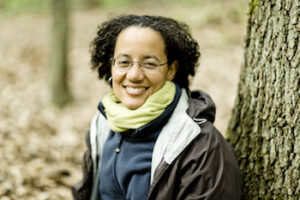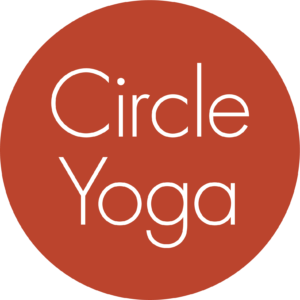February 2018
Thoughts from Annie
This month, Annie has invited guest blogger Kaira Jewel Lingo to share her thoughts. Kaira Jewel teaches Buddhist meditation, mindfulness, and compassion, with a focus on activists, people of color, artists, educators, families, and youth. She was an ordained nun of 15 years in Thich Nhat Hanh’s Order of Interbeing, and is now a lay Dharma teacher based in Washington, DC.

Knowing What We Are Doing: Mindfulness and Racial Awareness
by Kaira Jewel Lingo
I recently heard from a college friend who I hadn’t been in touch with for over 15 years. In the middle of the night, up because of insomnia, she was reflecting on something I’d said to her and decided to look me up online. She Googled me and contacted me through my website. When we talked soon after this, she told me how important my explanation of mindfulness was for her so many years ago. She recalled I had told her that being mindful means whatever we are doing, we know that’s what we are doing. So in the last 15 years she has been walking along the river in Newark and knowing she is walking along the river. When she sits to eat, she practices to know she is sitting and eating. When she breathes in and out, she knows she is breathing in and out.
I was so pleased to find out that something so simple—that I forgot I had even said—had been so powerful for her all these years. In a sense what I told her was like a seed, which she planted in the fertile soil of her consciousness. By watering it diligently, it began to sprout into transformative insight in her daily life. Ever since I heard her share this, I have been inspired by it.
Earlier this month, I co-facilitated a retreat for 30 people of color near Washington, DC. It was a very powerful retreat. I shared this story with them as well.
As I reflect on this definition of mindfulness more, I see that part of knowing what we are doing is also knowing how and in what context we are doing it. This includes our different identities of race, gender, sexual orientation, class, age, ability and more. So, part of being mindful is being mindful of racism, sexism, homophobia, and many other isms that keep us from fully expressing who we are and connecting deeply and authentically with each other—in our relationships, our families, our communities, our workplaces, and larger society. If you are not in the dominant groups in any of these areas of identity, you have no choice but to be mindful of them. If you do belong to any of these dominant groups, it may be harder to be aware of them, because that part of who you are is taken for granted as the norm.
I was mindful during the weekend of the relief many of us experienced being in a gathering of people of color. While our experiences as people of color are not identical and our relationship to our many intersectional identities is varied, we each came to the retreat because there was a hunger to know ourselves and be known in a way that doesn’t happen in a predominantly white space, including in our spiritual or mindfulness-based communities. Many participants expressed how refreshing and healing it was in a spiritual setting to hear racism, privilege, oppression and discrimination explicitly named, as well as how to deal with their effects on us and practice to transform them. For so many people of color, our experience in many of our largely-white mindfulness and Buddhist communities leaves these realities unaddressed and invisible and therefore perpetuates harm.
Our spiritual communities cannot support our deepest transformation if they are not places where we engage with the issues of hatred and discrimination that we are all impacted by, whatever our race or ethnicity.
The month of February is our nation’s month of honoring Black History. This only has meaning in the context of the history of race as a concept in general, as notions of “blackness” arose because of and in contrast to the equally constructed and artificial notions of “whiteness.” As we attend to learning more about the contributions and history of African Americans, I also invite us to explore our own racial history this month and particularly to investigate the role of whiteness in our spiritual or mindfulness practice.
To help us explore, some questions you may like to ponder, journal about, or share in your mindfulness groups or sanghas are:
When did I know I was of a particular racial background? What event or awareness led me to know I belonged to a racial group that did not include other people?
How was this identity defined in relation to other racial groups?
How has this identity impacted myself and others over the course of my life?
And how do these identities influence the mindfulness groups or sanghas I participate in?
Wherever we are on the map racially or ethnically, it is important for all of us to contemplate how a history of white supremacy in the United States might impact our experience in our sanghas and mindfulness practice spaces.
If you look at most of the mindfulness summits and trainings that exist online around the world, what kind of person is presented as the norm for a mindfulness teacher or expert? From my observation it is mostly white men, followed by a smaller percentage of white women, who are mostly middle-aged or older, educated, and middle-class or with class privilege. What does this say about how accessible, relevant, and healing these practices are to non-white, less economically advantaged audiences?
And this blindness and bias can be awakened to. Exploring the meaning and impact of race and identity is truly a mindfulness practice of knowing what we are doing as we are doing it, within the larger context of social conditioning, privilege, and power. Understanding this and looking deeply into it is the only way we can heal it.
Awakening can’t happen outside of our systems of oppression, free from racism, sexism, homophobia, ableism, or an illusive gender binary. There is nowhere else to go to awaken. We only have this place and time, here and now. So it must be possible to wake up to the truth of our interbeing right in the midst of our separation, and unjust, unequal systems. My intention is for all of us to awaken together to the many places inside of us as individuals and in our collective psyche that need to be seen with clarity and compassion and lovingly healed.
I am aware that in our communities some of us are more familiar with exploring privilege and identity than others. If you are interested in going deeper, here are some resources for further reading and study:
Together We Are One: Honoring Our Diversity, Celebrating Our Connection, by Thich Nhat Hanh (his teachings from the People of Color retreats)
The Way of Tenderness: Awakening Through Race, Sexuality and Gender, by Zenju Earthlyn Manuel
Radical Dharma: Talking Race, Love and Liberation, by Rev. angel Kyodo Williams, Lama Rod Owens, with Jasmine Syedullah, PhD
Awakening Together: The Spiritual Practice of Inclusivity and Community, by Larry Yang
Dharma, Color and Culture: New Voices in Western Buddhism, edited by Hilda Gutierrez Baldoquin
Why is American Buddhism So White? from Buddhadharma, Winter 2011
In addition, here is an example of what one sangha that is practicing to be inclusive of all our different identities looks like:
East Bay Meditation Center in Oakland, CA
At EBMC, they use these Agreements for Multicultural Interactions.
